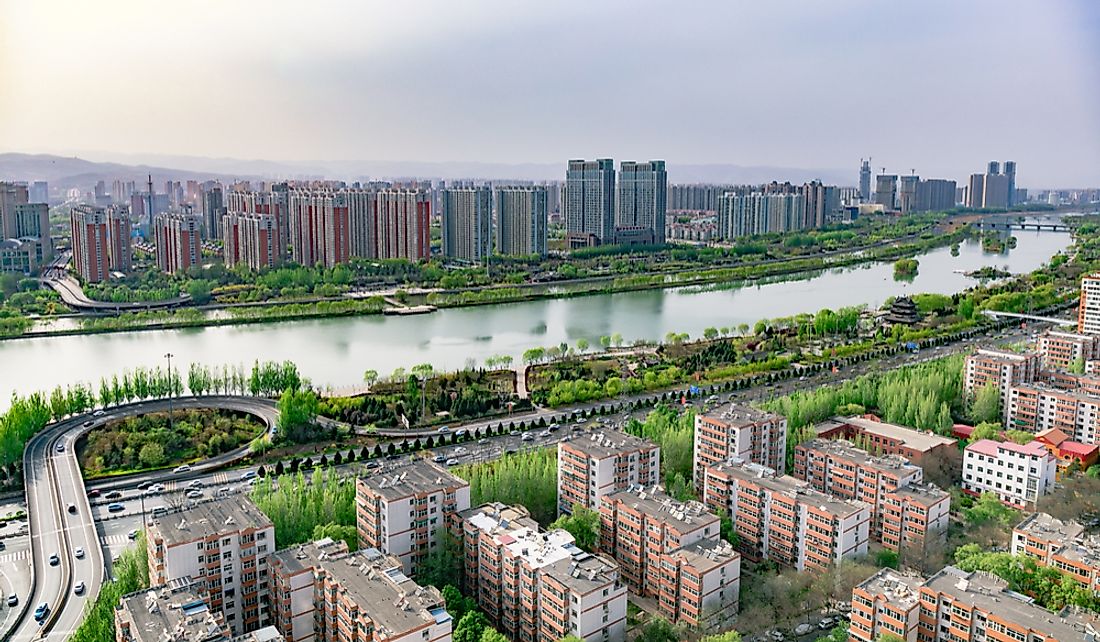What Is The Capital Of The Shanxi Province Of China?

The city of Taiyuan serves as the provincial capital of Shanxi province. The city is situated at the center of the roughly rectangular shaped province. Taiyuan lies along the strategic north-south route through Shanxi Province and is among China's major industrial cities. The city also controls vital natural communication lines that go through the mountains to the Shaanxi province to the west and the Hebei Province to the east. The city's strategic role is enhanced by the rail lines to Hebei and Henan provinces as well as expressways to Datong, Shijiazhuang, and Yuncheng.
Shanxi Province
The Shanxi province is bordered by Henan province to the south and southeast, by Hebei to the east, by Shaanxi to the west, and by Inner Mongolia to the north. The term Shanxi translates to "West of the Mountains” which testifies to the territory’s rugged terrain on the Taihang Mountains. In the past, the province played a crucial role as the buffer between the country and the Mongolian and Central Asian Steppes. It also served as a strategic gateway to fertile lands in Henan and Hebei. The province is home to Heng Shan mountain, one of the five Sacred Mountains of China as well as several of China's UNESCO World Heritage sites.
History of Taiyuan
Taiyuan was initially the location of Jinyang which was a strategic center used by the ancient states of Zhao and Jin. It later became the seat of the Commandery of Taiyuan in 221 BCE after the conquest Zhao and the neighboring states, a position it held throughout the Han dynasty (206 BCE – 220 CE). During the Dong Han Period (25-220 CE), Taiyuan became the provincial capital of Bing. In the 6th century, it became a secondary capital to the Dong Wei, Bei, and Qi states making it a large city and the center of Buddhism. The city served as an important base for the founder of the Tang dynasty in his conquest of the empire. When China was reunified in 960, Taiyuan continued its resistance and was destroyed in 979 as a result. In 982, the new Taiyuan city was established at the banks of the Fen River. The city became the capital of Hedong in 1107 and retained the role with several changes in its status and name until the Yuan period came to an end in 1368. The city was renamed to Taiyuan Fu at the beginning of the Ming Dynasty and retained the name until 1912. The city also served as the capital of Shanxi during the Ming and Qing dynasties (1644 -1912). The city was renamed to Yangqu under the Republic and retained the name until 1927.
The Contemporary City
Taiyuan has experienced dramatic industrial growth since 1949. The city sits close to considerable iron and coal deposits that have fueled the city's industrial growth. Several industrial districts have been created in the city's outskirts that have large chemical complexes, machine making shops, and iron and steel making industries.
Tourist Attractions
Some of the notable tourist attractions in the city include the Jinci Temple whose beauty is only rivaled by The Twin-Pagoda Temple's unique architectural design. Anyone visiting the city should also consider visiting the Tainong Shan stone caves that date back to the Tang dynasty and taking part in the Shanxi Taiyuan International Folk Arts Festival.











